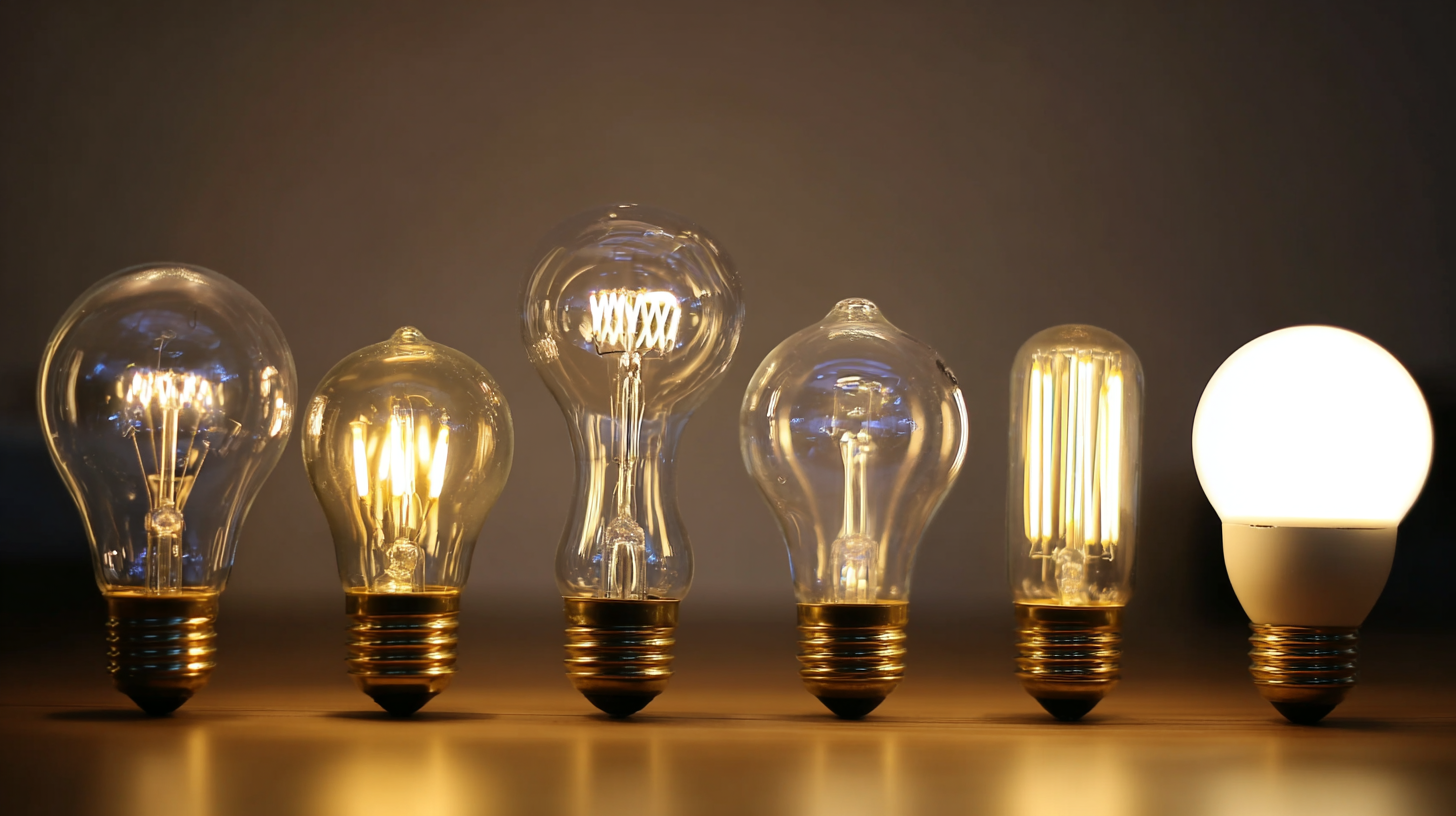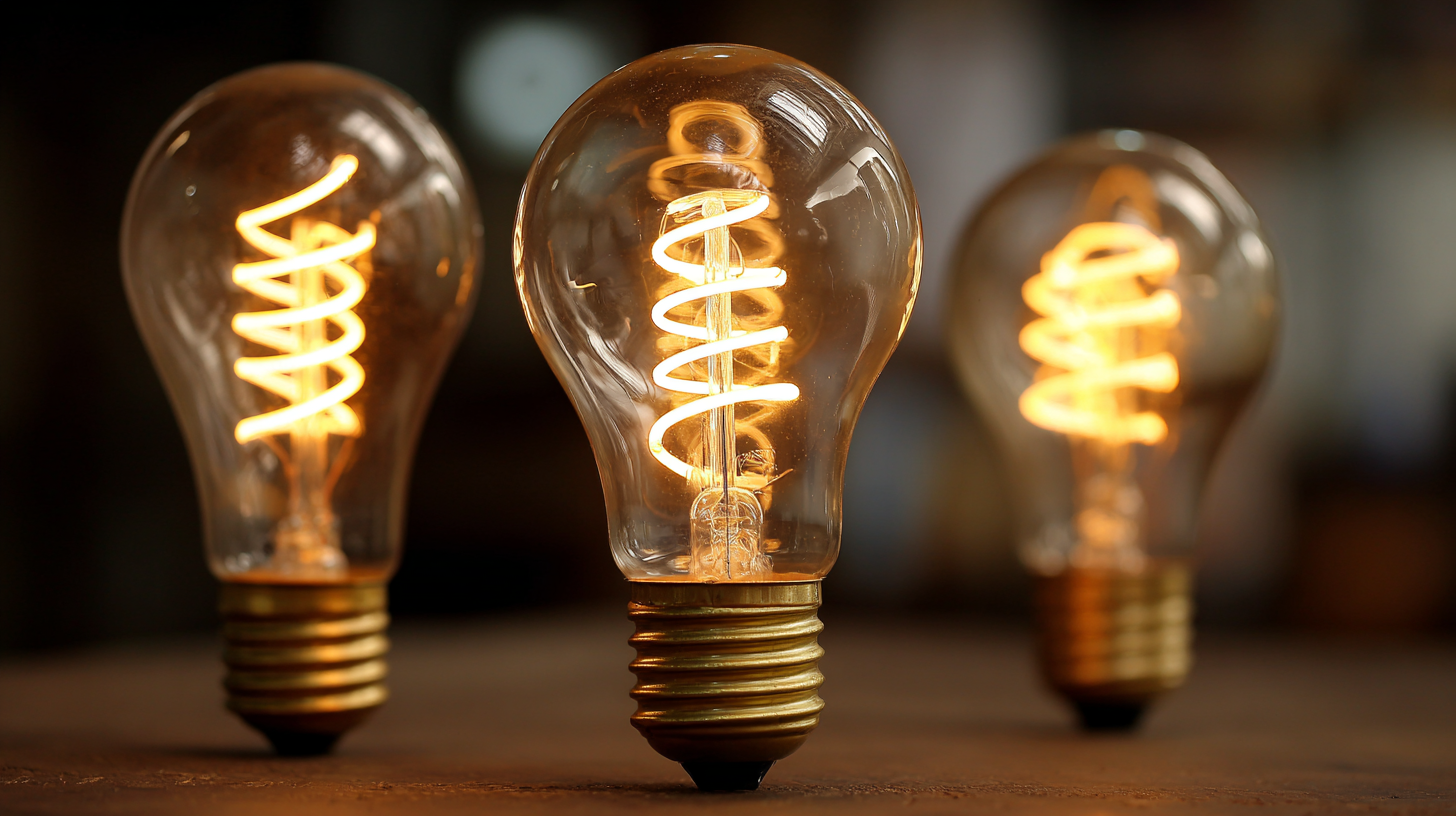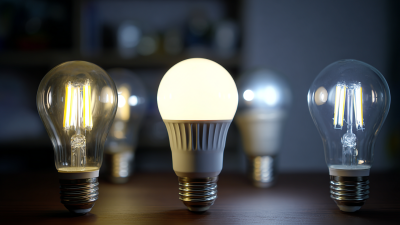The Future of Light Bulbs How Smart Technology is Revolutionizing Home Illumination
As the demand for energy efficiency and smart home technology continues to rise, the future of light bulbs is undergoing a transformative revolution. According to the latest report by the International Energy Agency, nearly 60% of the global lighting market is expected to switch to LED technology by 2030, significantly reducing energy consumption and greenhouse gas emissions. Furthermore, the global smart lighting market, which includes intelligent light bulbs equipped with IoT capabilities, is projected to reach $52 billion by 2025, growing at a CAGR of over 24%. This shift indicates not only a move towards more sustainable lighting solutions but also a growing trend in home automation, where smart light bulbs can be controlled remotely and programmed for optimal energy use. As we explore the advancements in light bulb technology, it becomes clear that the integration of smart features is setting a new standard for home illumination, providing both convenience and efficiency for homeowners.

The Evolution of Light Bulb Technology: From Incandescents to Smart Solutions
The light bulb has undergone a remarkable transformation since the advent of incandescent technology in the late 19th century. Today, the landscape of home illumination is dominated by LED and smart bulbs that not only provide light but also enhance the functionality and efficiency of living spaces. According to a 2022 report by the Department of Energy, LED bulbs use at least 75% less energy than traditional incandescent bulbs, greatly reducing household energy consumption and costs.
As smart technology continues to evolve, homeowners are increasingly opting for smart bulbs that offer advanced features such as remote control, dimming capabilities, and color changes through mobile applications. Research from Statista indicates that the global smart lighting market is expected to reach $19 billion by 2025, underscoring the growing demand for innovative lighting solutions tailored to modern lifestyles.
Tips: When upgrading your home lighting, consider opting for smart bulbs that are compatible with voice assistants like Amazon Alexa or Google Assistant, providing you with hands-free control. Additionally, implementing motion sensors can help reduce energy waste by ensuring that lights are only on when needed, further cutting down on electricity bills. Lastly, try experimenting with color-changing bulbs to create the perfect ambiance for any occasion, enhancing your home’s atmosphere effortlessly.

Market Insights: The Rapid Growth of Smart Lighting Industry Forecasts
The smart lighting industry is witnessing an unprecedented surge, driven by the rapid adoption of advanced technology and the growing consumer preference for energy-efficient solutions. Market forecasts indicate that the global smart lighting market, which encompasses everything from LED bulbs equipped with connectivity features to sophisticated lighting control systems, is expected to experience substantial growth in the coming years. Factors such as the proliferation of smart home devices and the increasing popularity of IoT technology are key contributors to this trend. Companies are innovating at a fast pace, integrating artificial intelligence and machine learning into lighting systems, allowing for personalized user experiences and greater energy management.
As homeowners seek to enhance their living spaces with convenience and efficiency, the demand for smart lighting solutions continues to escalate. Retailers and manufacturers are responding by expanding their product offerings, focusing on user-friendly interfaces, and enhancing the compatibility of smart lights with various platforms, including voice assistants like Alexa and Google Assistant. The shift towards smart technology not only improves energy consumption but also creates a more dynamic environment, as users can customize their lighting according to their moods or activities. This transformation in home illumination reflects a broader trend in the market, where technological advancements are redefining traditional concepts of lighting.
The Future of Light Bulbs: Smart Lighting Market Growth
Energy Efficiency Revolution: How Smart Bulbs Contribute to Sustainability Goals
Smart bulbs are at the forefront of the energy efficiency revolution reshaping home illumination. According to a report by the U.S. Department of Energy, lighting accounts for approximately 15% of residential energy use. Transitioning to smart LED bulbs can significantly reduce this consumption. For instance, EnergyStar-rated smart bulbs use at least 70% less energy than traditional incandescent bulbs, while lasting up to 25 times longer. This longevity not only cuts down on replacement costs but also lessens the environmental impact associated with lighting production and disposal.
Furthermore, smart technology enables consumers to integrate their lighting systems with home automation, optimizing energy use based on real-time needs. A study from the American Council for an Energy-Efficient Economy (ACEEE) highlights that homes equipped with smart lighting control systems can save an additional 20% on energy bills. By allowing users to remotely control their lights, set schedules, and utilize sensors, smart bulbs contribute to a more sustainable lifestyle, aligning perfectly with global sustainability goals. As smart lighting solutions continue to evolve, they play a crucial role in reducing carbon footprints, ultimately contributing to a greener planet.
Enhancing Home Automation: Integrating Smart Bulbs with IoT Devices
 Smart bulbs are becoming an integral part of modern home automation, seamlessly integrating with various IoT devices to enhance convenience and efficiency. These innovative lighting solutions can be controlled remotely via smartphones or voice assistants, allowing homeowners to adjust brightness, color, and scheduling from anywhere. By connecting smart bulbs to a home’s ecosystem of IoT devices, such as smart thermostats or security systems, users can create synchronized responses to different scenarios; for example, lights can automatically dim when a home theater system is activated, or flash to alert occupants of security breaches.
Smart bulbs are becoming an integral part of modern home automation, seamlessly integrating with various IoT devices to enhance convenience and efficiency. These innovative lighting solutions can be controlled remotely via smartphones or voice assistants, allowing homeowners to adjust brightness, color, and scheduling from anywhere. By connecting smart bulbs to a home’s ecosystem of IoT devices, such as smart thermostats or security systems, users can create synchronized responses to different scenarios; for example, lights can automatically dim when a home theater system is activated, or flash to alert occupants of security breaches.
Additionally, the capability to set routines and automation further revolutionizes home illumination. Homeowners can program their smart bulbs to turn on or off at specific times, or even simulate occupancy while they are away, improving both security and energy efficiency. Integration with environmental sensors allows smart bulbs to adjust lighting based on natural sunlight, enhancing comfort while reducing energy consumption. As smart technology continues to evolve, the role of IoT-connected lights will only become more central, making home environments not only smarter, but also more responsive to the needs and preferences of their inhabitants.
User Engagement Trends: How Consumers Are Adapting to Smart Illumination Technology
As smart illumination technology continues to gain traction, consumer engagement trends reveal significant shifts in how people interact with lighting solutions. According to a report by Navigant Research, the global smart bulb market is projected to reach $14.7 billion by 2025, reflecting a growing acceptance of technology-integrated lighting in households. Consumers are increasingly drawn to the convenience and versatility these products provide, allowing them to control brightness, color, and schedules through smartphone apps or voice commands.
Moreover, a survey conducted by Statista shows that 60% of smart home device owners use smart bulbs for energy efficiency and enhanced security features. They can set lighting to mimic their presence at home, deterring potential intruders, while also reducing energy consumption by automating lights based on occupancy. This trend indicates that consumers are not just adopting smart lighting for aesthetic purposes but are also prioritizing functionality and efficiency, aligning with a broader movement towards sustainable living. As these technologies evolve, it will be interesting to see how consumer preferences will shape the future of home illumination.
The Future of Light Bulbs: How Smart Technology is Revolutionizing Home Illumination
| Data Dimension | Consumer Adaptation Rate (%) | Preferred Smart Features | Average Monthly Spending on Smart Lighting ($) |
|---|---|---|---|
| Smart LED Bulbs | 68% | Voice Control, Scheduling | $15 |
| Smart Mood Lighting | 50% | Color Changing, Scenes | $20 |
| Smart Security Lights | 40% | Motion Detection, Alerts | $25 |
| Smart Plant Growth Lights | 35% | Wavelength Control, Automation | $30 |
| Smart Ambient Lights | 55% | Natural Light Simulation, Remote Access | $22 |
Related Posts
-

Advantageous Features of Embracing Led Bulbs for Sustainable Lighting Solutions
-

Mastering Your Space: A Comprehensive Guide to Selecting the Best Light Fixtures for Any Project
-

Innovative Solutions for Enhancing Your Space with Track Lighting Systems
-

Ultimate Guide to Choosing the Perfect Dimmable Led Light Bulbs for Your Home
-

Innovative Solutions for Optimizing LED Driver Performance
-

Elevate Your Space with Quality Ceiling Lights: Chinese Manufacturing for Global Markets

